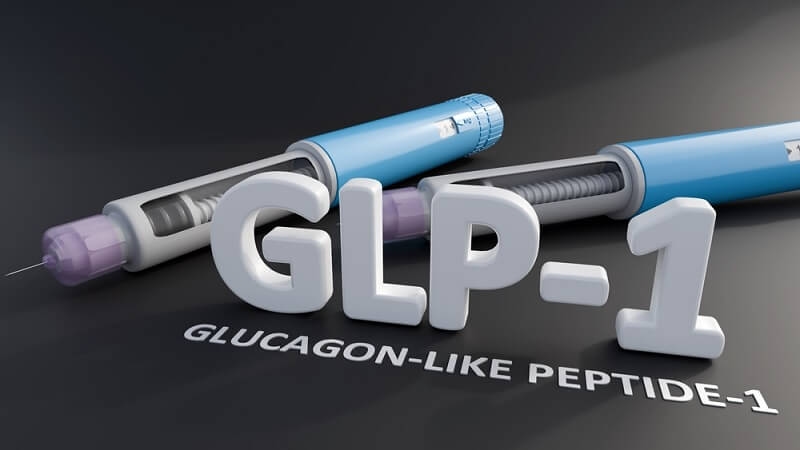The GLP-1 Diet for Better Nutrition and Lasting Health

Starting a journey with GLP-1 medications can significantly impact weight loss and metabolic health. While the medication does a significant amount of the heavy lifting, the choices you make on your plate can dramatically improve the effectiveness of the medication. Here, GLP-1 nutrition becomes your strongest supporter. Understanding which foods to eat while taking GLP-1 medications is not just about counting calories, but more importantly, it's about proactively nourishing your body with foods that work in conjunction with the treatment, minimize side effects, and form habits that last a lifetime around eating well.
In this guide, we will walk through the most critical GLP-1 diet considerations, including a helpful framework for satisfying and effective GLP-1 meals. Think of this not as a restrictive diet but as a positive eating approach to yield the best you can and the most comfort.
Understanding the "Why": How GLP-1 Diets Change the Game

To understand the significance of a customized diet, it is helpful to know how GLP-1 medications work. They function like a natural hormone in your body called Glucagon-like Peptide-1. It has a few important roles.
- Promotes Insulin Release: It helps your body better manage blood glucose levels.
- Slows Gastric Emptying: This is an essential factor. Food will now move from your stomach to your intestines much more slowly, which is why you will feel fuller longer and have less of an appetite.
- Signals Fullness to the Brain: It will signal your brain to reduce hunger signals.
Because of the specific effects of GLP-1 medications on digestion—i.e., gastric emptying—you will be approaching food and meals differently. Large, heavy meals or those with a higher fat content may be uncomfortable and trigger side effects such as nausea, indigestion, and/or bloating; therefore, you will want to adjust your intake accordingly.
This is why the first GLP-1 diet principle is to eat foods that support this change to digestion and focus on nutrient-dense foods.
Read More: How to Improve Gut Health Naturally: Foods and Habits
Core Principles of GLP-1 Nutrition
Before we go into specific food lists, we would like to present the foundational pillars that will help you make your food choices. Following the GLP-1 guidelines will help you be successful in your journey.
- Protein Has Priority: Protein is the shining star. Protein leads to satiation and helps maintain lean muscle tissue while you are in the weight loss phase, in addition to requiring more energy to digest than fat or carbohydrate. It is essential to include a source of lean protein at every meal and snack.
- Fruits and Vegetables (soluble fiber): Soluble fiber can further support the medication by creating a sense of fullness and assisting in promoting stable blood sugar. Ideally, the fiber in your diet will also support digestive health.
- Slow-Release Carbohydrates: Try to avoid processed sugars and refined white bread. And, complex carbs that you should focus on include whole-grain options, legumes, and vegetables, which provide a longer-lasting energy source and will not cause crashing blood sugar spikes.
- Hydrate, Hydrate, Hydrate: Constipation can be an issue simply because of the slowed gastric emptying, along with hydration to keep things moving. Additionally, staying hydrated can help address hunger cues, as we often confuse thirst with hunger.
- Practice Mindful Eating: Your body's signals will be different. Eat slowly, chew thoroughly, and stop at the first sign of fullness. Overeating, even with healthy food, will be immediately uncomfortable.
Your Grocery List: Foods to Eat on GLP-1
When you stock your kitchen with the right things to make meals that are GLP-1 friendly, it can be easy and fun! Here's a list of the best categories of foods to focus on.
Protein Powerhouses:
- Lean meats: Chicken breast, turkey, and lean cuts of beef and pork.
- Fish and seafood: Salmon (which is rich in omega-3), cod, tuna, shrimp, extra-lean seafood, and/or scallops.
- Plant-based protein: Tofu, tempeh, lentils, chickpeas, black beans, and edamame.
- Dairy and eggs: Greek yogurt, cottage cheese, eggs, and low-fat milk or milk alternative.
Fabulous Fibers:
- Non-starchy vegetables: Leafy greens (spinach, kale), broccoli, cauliflower, bell peppers, zucchini, asparagus, and green beans.
- Starchy vegetables (in moderation): sweet potatoes, squash, and corn.
- Legumes: Lentils, black beans, kidney beans, and chickpeas (they count for both protein and fiber together!).
- Fruits (low-glycemic): Berries, apples, pears, oranges, and cherries.
- Whole grains: Oats, quinoa, brown rice, and whole wheat (bread or pasta).
Healthy fats (in moderation):
Avocado, nuts (almonds, walnuts), seeds (chia, flaxseed), and olive oil.
Building Balanced GLP-1 Friendly Meals
The magic happens when you combine these principles and ingredients into a balanced plate. A helpful visual is to divide your plate, keeping in mind your likely reduced portion sizes:
- 50% Non-Starchy Vegetables: Fill half your plate with fiber-rich veggies. They add volume and nutrients with minimal calories.
- 25% Lean Protein: Dedicate a quarter of your plate to your protein source.
- 25% Complex Carbohydrates: The final quarter is for your whole grains or starchy vegetables.
Sample Meal Ideas:
- Breakfast: A vegetable omelet made with two eggs, spinach, and mushrooms, served with a side of berries.
- Lunch: A large salad with grilled chicken breast, mixed greens, cucumbers, tomatoes, chickpeas, and a light vinaigrette.
- Dinner: Baked salmon with a side of roasted asparagus and a small portion of quinoa.
- Snacks: Greek yogurt with a sprinkle of chia seeds, an apple with a tablespoon of peanut butter, or a small handful of almonds.
A Sample GLP-1 Diet Plan for One Day
Here is a practical example of how you might structure a single day of eating. Remember, portions are highly individual, especially with this medication. Start small and listen to your body.
- Breakfast (7:30 AM):
- 1/2 cup of plain Greek yogurt
- 1/2 cup of mixed berries
- 1 tablespoon of ground flaxseed
- A glass of water
- Morning Snack (10:30 AM—if hungry):
- A hard-boiled egg
- A few cucumber slices
- Lunch (1:00 PM):
- 3-4 ounces of grilled chicken breast
- A large salad with romaine lettuce, bell peppers, and cherry tomatoes
- 1/4 cup of chickpeas for added fiber
- Light lemon and olive oil dressing
- Afternoon Snack (4:00 PM—if hungry):
- A small apple
- 1 tablespoon of almond butter
- Dinner (6:30 PM):
- 4 ounces of baked salmon
- 1 cup of steamed broccoli
- 1/2 cup of cooked brown rice
Navigating Challenges and Side Effects
Regardless of how effective your GLP-1 nutrition plan is, you may still experience some challenges. Here's how to deal with those challenges:
- Nausea: This may be caused by poor portion size, high-fat foods, or eating too quickly. Stick with small, bland meals when you are nauseous. The BRAT diet (bananas, rice, applesauce, toast) is beneficial; ginger tea can also be helpful.
- Constipation: This is often due to dehydration and delayed digestion. Drinking more water, especially certain flavored waters, is very important. Also, ensure that you are getting enough fiber from vegetables and fruits. Taking a brief daily walk may also help stimulate your digestive system.
- Loss of Appetite: It can feel odd not to be hungry; however, it is still important to eat! Skipping meal times can lead to low energy levels, nutrient deficiencies, and even muscle loss. Focus on small portions of food at each meal and opt for nutrient-dense, calorie-dense snacks between meals.
The Long-Term Vision
The ultimate goal of combining medication with a sound nutritional strategy is to build habits that last a lifetime. The GLP-1 diet is not a temporary fix but a learning tool. It teaches you about portion control, the power of protein and fiber, and how to listen to your body's true hunger and fullness signals. This knowledge is invaluable for maintaining your health long after you've reached your goals.
Helpful articles: Learn Basic Healthy Eating Tips for a Healthier Life
Conclusion
Pairing your GLP-1 medication with intentional dietary choices is the key to unlocking its full potential. By focusing on lean protein, high-fiber foods, and mindful eating practices, you can create satisfying GLP-1-friendly meals that support your health goals, manage side effects, and pave the way for lasting wellness. This journey is about nourishing your body strategically for sustainable success.
This content was created by AI

